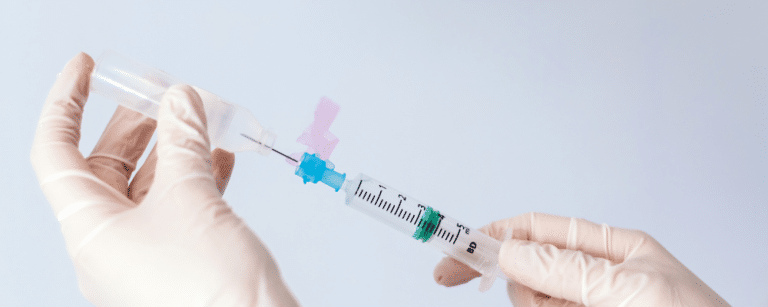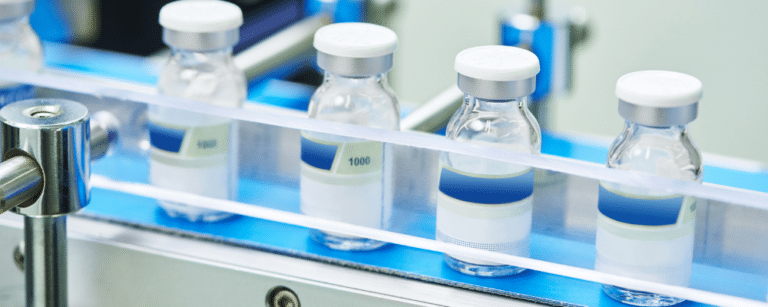E-Beam and Gamma are both great sterilization modalities with long and successful histories of use. Both are mature forms of radiation sterilization, which is recognized as an “Established Category A” modality.
Still, there are significant differences in terms of dose penetration and other types of performance. Understanding their distinct advantages and applications is crucial for making an informed decision. Let’s delve into the practicalities of each method to help you navigate this critical choice with confidence.
E-Beam vs. Gamma Sterilization
| Gamma | E-Beam | |
|---|---|---|
| Sterilization Source | radioactive material |
grid electricity |
| Technology Maturity | High | High |
| Process quantity | Boxes | Boxes |
| Processing time | Hours | Seconds |
| Sustainability & Environmental impact | Synthetic radioisotopes are required for process | As clean as the electricity used to power the system |
| Benefits | • Good penetration / tight Dose Uniformity Ratio (DUR) performance • Almost no power required. |
• Extremely efficient: sustainably process most volume / year • Best $ / capacity available |
| Limitations | • Limited supply of Co-60 radioisotopes • New geopolitical sensitivity in wake of UKR war, China stance |
• Products requiring tight DURs are challenging • Large / dense products can be challenging |
| Outlook | ❌ No growth: isotope supply issues & geopolitical risk |
✅ Growth: efficient, sustainable technology |

E-Beam Advantages
- Material Compatibility: E-Beam offers equivalent-or-better material compatibility, largely due to rapid dose delivery rate.
- Efficiency: Depending on requirements, E-Beam systems can process multiple truckloads of product per day. Many medical devices, when packaged to optimize their compatibility with E-Beam, can achieve exceptional throughput and lowest cost to sterilize vs. Gamma.
- Reliability & Sustainability: Once built, E-Beam systems are stable, long-lived, and run on clean grid power – they neither require (e.g. Cobalt-60) nor produce any radioactive material, minimizing their vulnerability to supply chain disruption.
Gamma Advantages
- Depth of Penetration: Gamma’s major advantage over E-Beam centers on improved penetration. Gamma radiation has a very flat penetration profile that can be used to penetrate much more mass at once that an E-Beam system can. Gamma radiation is conveyed via photons, which are highly penetrative, while E-Beam radiation is conveyed via high-speed electrons, which are much more massive and accordingly less penetrative.
- Low/Tight Dose Uniformity Ratio (DUR) Processing: Due to the flat penetration profile mentioned above, products with very close minimum and maximum dose requirements coupled with challenging physical profiles can work well in Gamma. What’s commonly misunderstood is that, like Gamma, E-Beam can deliver very Low-DUR results, but this is typically dependent on somewhat ideal characteristics of product packaging (e.g. “thin” products without massive density heterogeneity).
Material Compatibility
E-Beam and Gamma are both forms of ionizing radiation, and sterilize product by breaking the bonds in DNA/RNA molecules, preventing pathogens from functioning.
Because they are both forms of radiation sterilization, material compatibility can be considered similar. However, the speed at which dose is delivered is very different. Dosing in Gamma typically can take hours to tens of hours, while a box of E-Beam product is typically dose in seconds.
Depending on materials, the high dose rate of E-Beam can deliver more favorable results, especially in terms of minimizing yellowing since the product’s dwell time in radiation is so much shorter.
Effectiveness
Commonly, most medical devices are low-density (< 0.2 g/cm3) and thus a dual-pass E-Beam treatment can easily handle most shipper box sizes. Higher densities are also possible if geometry is suitable (at NextBeam, we are happy to provide a quick walkthrough using your own product’s geometry).
In the cases where this isn’t true, there are still workarounds (adjust the shipper box packaging and/or qualifying higher or lower dose) that can make a product that traditionally was sterilized via Gamma irradiation workable in E-Beam. Again, the questions rapidly become product-specific. Contact us for a free consultation.
Pricing
Gamma and E-Beam pricing is typically quoted only after dose mapping, but in general, E-Beam can be exceptionally efficient when used to treat low-density product (e.g. most packaged medical devices) with reasonable DURs.
We have a short writeup that provides some overview on choices that customers may want to consider when they are designing for E-Beam sterilization.
While it’s not easy to forecast Gamma’s longterm pricing, the very few companies that provide Cobalt-60 for Gamma irradiators have limited supply that they can generate, and the industry has experienced major pricing increases over the past decade. We expect Gamma’s elevated pricing to range from flat to substantially increasing over the coming decade.
Regulatory Compliance
E-Beam and Gamma are technologies that roughly date from the same era (e.g. 1950s). Both have evolved in recent years but E-Beam has significantly scaled. The FDA considers both modalities to be “Established Category A” sterilization modalities – the most mature recognition available.
Environmental Impact & Sustainability
Both E-Beam and Gamma are nearly zero-emission technologies (they both produce small quantities of ozone). E-Beam consumes electric power, and thus the sustainability of the facility is largely dependent upon the sustainability of the local electric utility. NextBeam’s South Dakota facility uses a very high proportion of renewable energy, for instance (84% of our electricity is renewable).
Scalability
Primarily due to Cobalt-60 supply constraints as well as NIMBY effects around the presence of facilities containing nuclear material, we expect no new gamma facilities to be built in the US over the coming decade.
E-Beam facilities, however, are comparatively simple to build, as there is no radioactive material present and accelerator technology is has matured substantially. As recently as 10 years ago, stable E-Beam systems topped out below 15kW, whereas today stable industrial beams can run up to 40-50kW, which can be considered a linear increase in processing rate. So – modern E-Beam facilities like NextBeam’s are built for large scale (and we plan to build more of them.)
Which Will You Choose?
Choosing between E-Beam and Gamma is a multidisciplinary decision with technical, economic, and operations considerations. By considering their effectiveness, pricing, regulatory compliance, and environmental impact, you can confidently choose the sterilization solution that best meets your needs and goals.
Want personalized guidance on choosing the safest sterilization modality for your products? Connect with our experts for a consultation tailored to your specific needs and concerns.
Additional Articles We Think You Might Like
Have a question? Speak with a sterilization expert today, at your own convenience.







